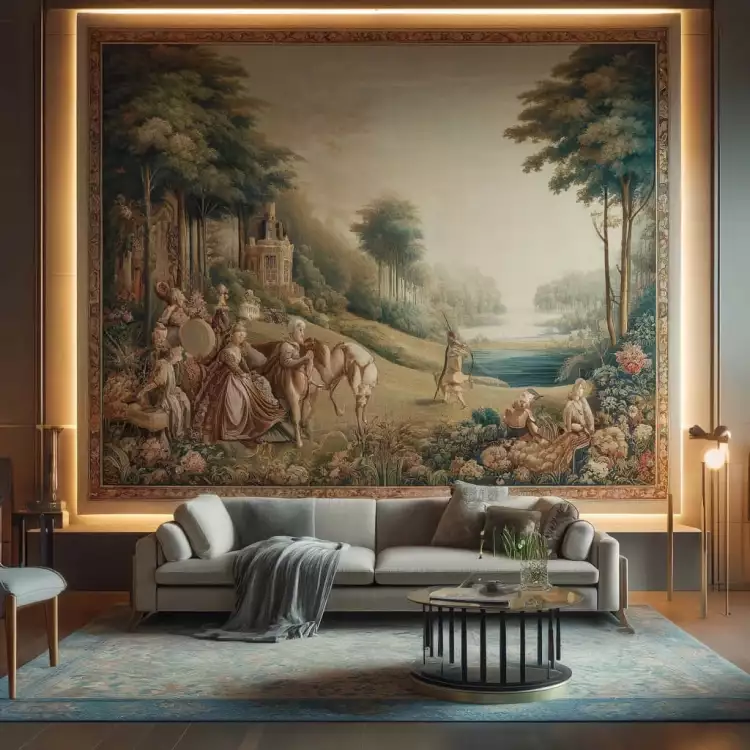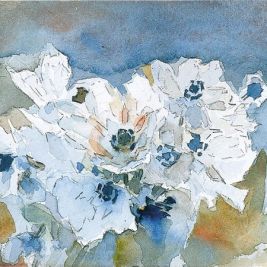
The Renaissance of Historic Tapestries
In the world of antiques, the allure of historic tapestries has seen a remarkable resurgence. These large-scale artworks, once the domain of aristocracy and the elite, are now celebrated not only for their aesthetic beauty but also for their historical significance and craftsmanship. This renewed interest in 17th- and 18th-century European tapestries highlights a collective desire to reconnect with the artistry of the past.
The Art and Craft of Tapestries
Historic tapestries are woven artworks, typically made from wool and silk, that depict intricate scenes or narratives. These pieces were originally intended as both decoration and insulation in large, draughty residences. The golden period of tapestry-making spans from 1500 to 1800, during which craftsmen and artists collaborated to produce works that were both ornamental and functional.
Current Trends and Collector Interest
According to industry experts like Collier Calandruccio from Klismos Gallery, there is a growing appreciation for Renaissance to Louis XVI tapestries. This trend is not just about acquiring antiques; it’s about integrating them into modern homes as show-stopping elements that draw on both their historical context and their intrinsic beauty.
Display and Care
When incorporating such grand pieces into contemporary settings, collectors and decorators often face challenges around proper display and conservation. Tapestries need to be displayed in a way that minimizes exposure to direct sunlight to prevent fading, and they require specific climatic conditions to preserve their fibers. The placement in a modern interior must be carefully considered to enhance their visual impact while protecting them from environmental damage.
The enduring appeal of historic tapestries in the antique market underscores a broader cultural shift towards valuing heritage and artistry. As we continue to explore and reinterpret past artworks, tapestries offer a unique connection to the narrative richness and skilled craftsmanship of earlier centuries. Their revival in contemporary settings not only preserves these magnificent works but also enriches our living spaces with a deep sense of history and beauty.
Are you a collector, or perhaps you're interested in starting? Visit our blog regularly for more insights into the fascinating world of antique collecting, and join the conversation by sharing your experiences and discoveries in the comments below.
For those eager to dive deeper into the history and details of European tapestries, exploring galleries like Klismos or visiting museum collections can provide further inspiration and education on these incredible pieces of woven art.

 American Silver - From Colonial Times to the Present
American Silver - From Colonial Times to the Present  Gustave Courbet: Biography, Artistic Works, the Artist's Best Paintings
Gustave Courbet: Biography, Artistic Works, the Artist's Best Paintings  Watercolor - the airy lightness of the rainbow: types, techniques, history
Watercolor - the airy lightness of the rainbow: types, techniques, history  Giovanni Guida is an Italian artist-innovator and master of grattage
Giovanni Guida is an Italian artist-innovator and master of grattage  Digital and Interactive Art: Redefining User Experience in Contemporary Art
Digital and Interactive Art: Redefining User Experience in Contemporary Art  Still life is a genre of painting that perfectly reflects the artist's inner universe
Still life is a genre of painting that perfectly reflects the artist's inner universe  Michelangelo - the greatest sculptor in the world: biography and works of the Italian artis
Michelangelo - the greatest sculptor in the world: biography and works of the Italian artis  William Turner—the greatest British artist of all time
William Turner—the greatest British artist of all time  Academism is an authoritative, virtuoso, and conservative style
Academism is an authoritative, virtuoso, and conservative style  Fernando Botero is the most famous artist in Latin America
Fernando Botero is the most famous artist in Latin America